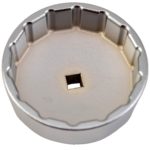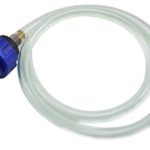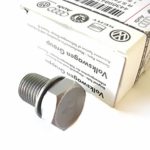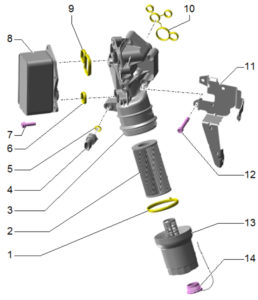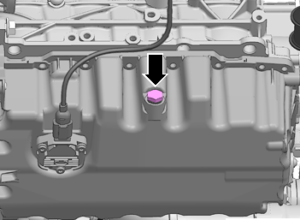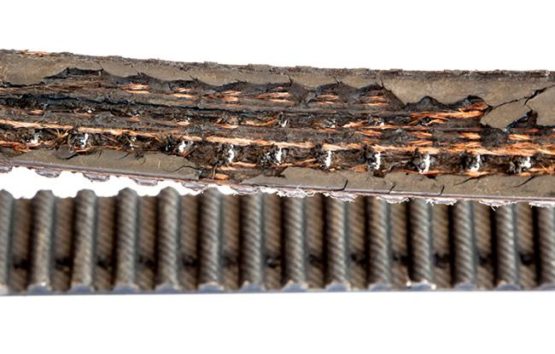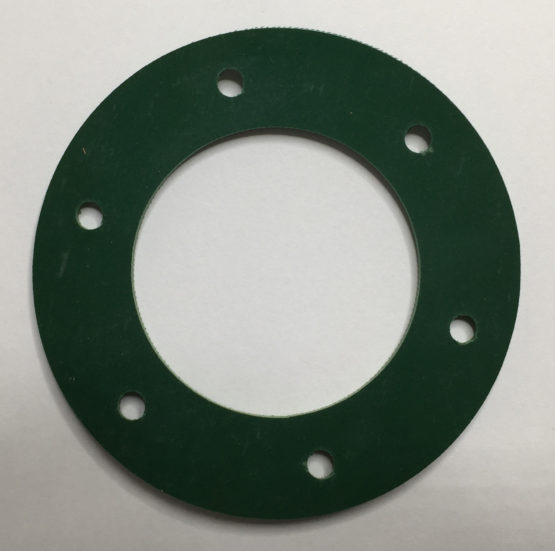Required for a regular oil annual service:
- Engine oil, interval, specification & capacity can be found here
- 74mm 14 Flute Oil Filter Wrench
- Mann-Filter HU 719/6 X or BOSCH 1457 429 243 Metal-Free Oil Filter
- Audi Oil Filter Drain Tool for Canister Style Oil Filter Housings
- New engine oil drain plug
The 74mm socket to remove the oil filter is definitely necessary though as it is very hard to twist and tighten it by hand otherwise. Locate the oil drain plug. Using a 18mm socket you can remove the plug, and the oil will take about 10 minutes to fully drain out. It will drain quicker if the oil is slightly warm, so go for a drive before starting this if your engine is cold to help speed up this process.
Once the oil is fully drained, insert the new drain plug and crush washer and tighten as far as you can take it (30 Nm). Next, you’ll then move on to replace the oil filter element.
 Unscrew the cap (14) and you see the bleed valve – some people drain it by pressing in the plastic nipple with a flathead screwdriver, although you risk breaking the nipple so I bought a special tool to drain it for me, which seems well worth the investment.
Unscrew the cap (14) and you see the bleed valve – some people drain it by pressing in the plastic nipple with a flathead screwdriver, although you risk breaking the nipple so I bought a special tool to drain it for me, which seems well worth the investment.
Once all of the oil is drained out of the filter, you can remove the tool and then unscrew the housing (13) and remove from the bottom of the car.
Place it on your work bench, clean sealing surfaces of sealing cap and replace the old filter with the new one (2). There is a rubber gasket (1) that goes inside the filter housing as well. Dip in new engine oil before re-installing the rubber gasket.
Re-install the oil filter and make sure it is on tight. Because of this unique design where the oil filter is upside down, you have two places you could potentially leak oil so you need to make sure both are buttoned down. Remount the sealing cap (14) with 25 Nm of torque.
At this point go ahead and put new oil in the Donkervoort and then start the engine and let it run for a minute or two. Make sure there are no leaks from either the main oil drain plug or the oil filter.



